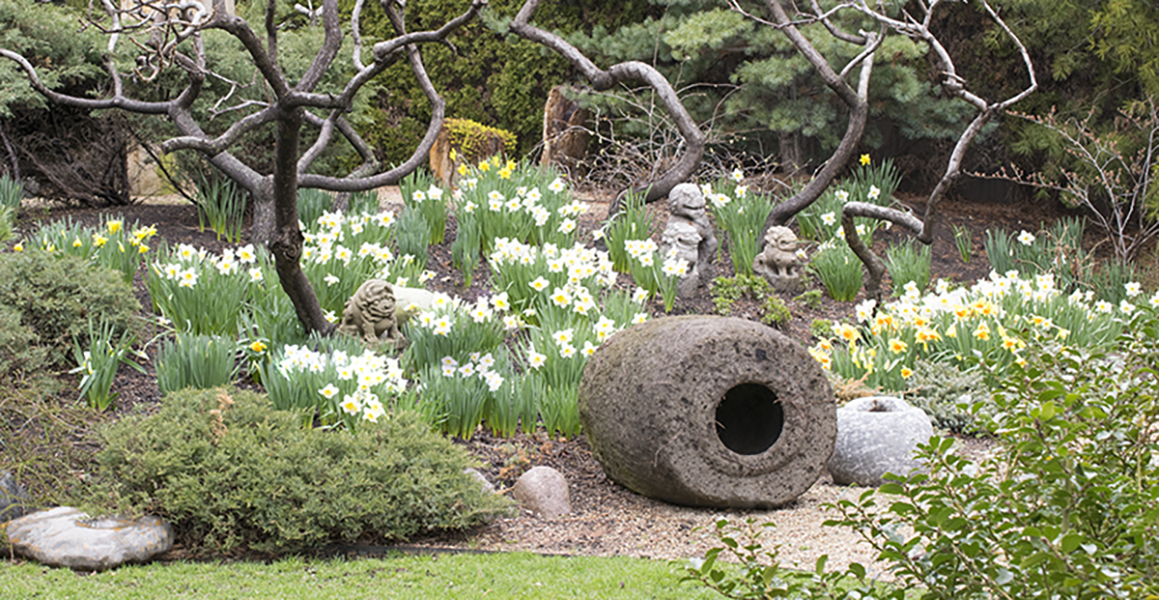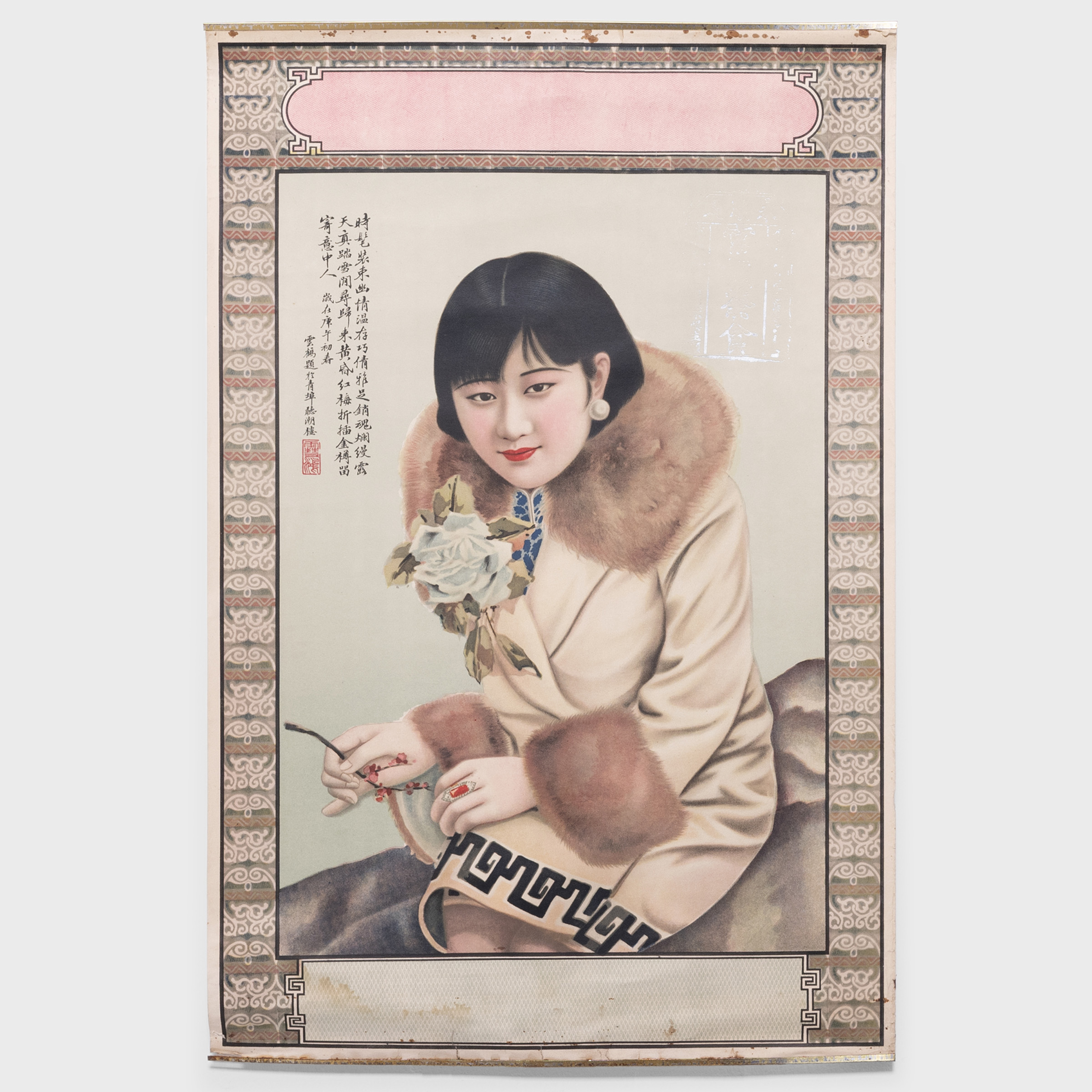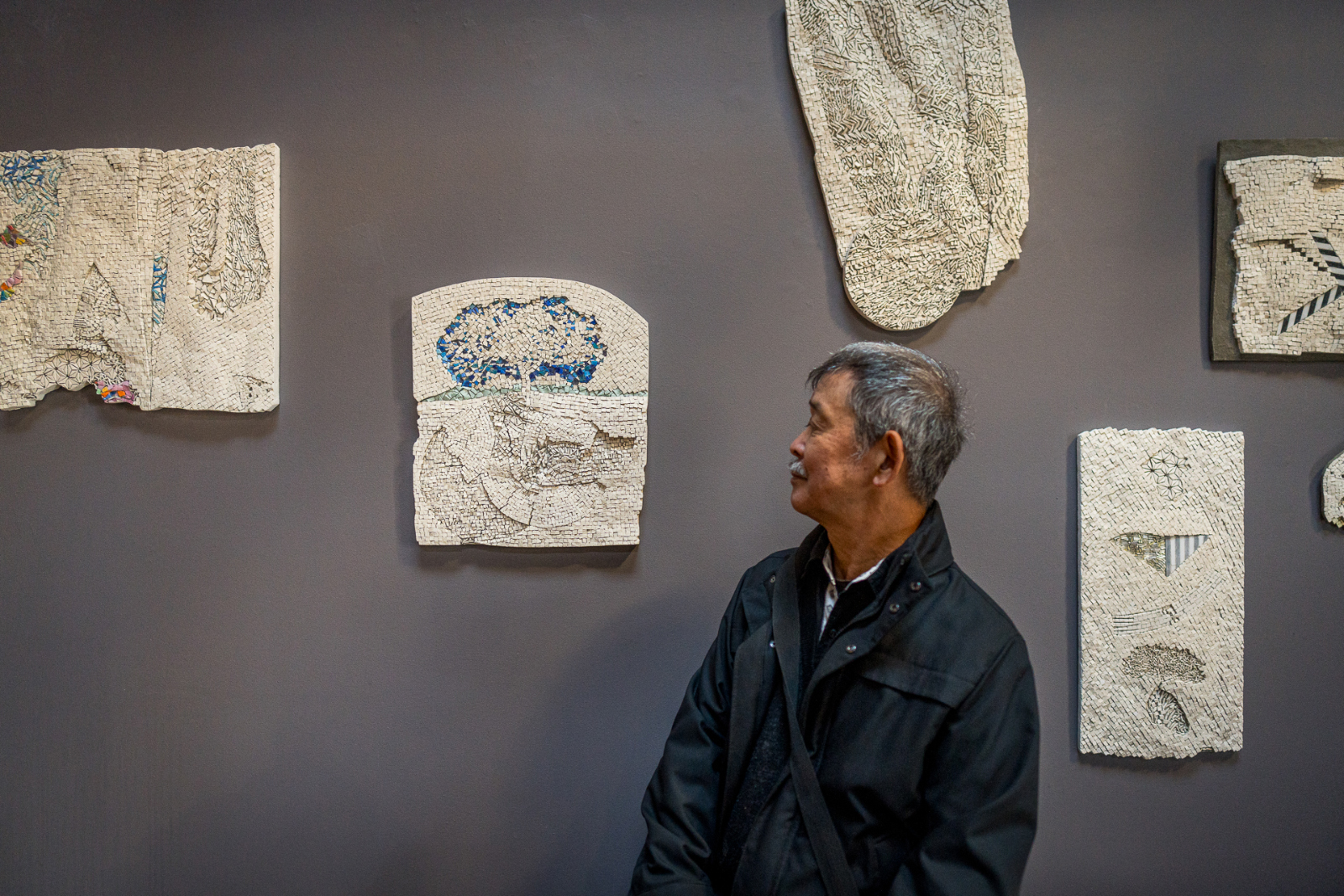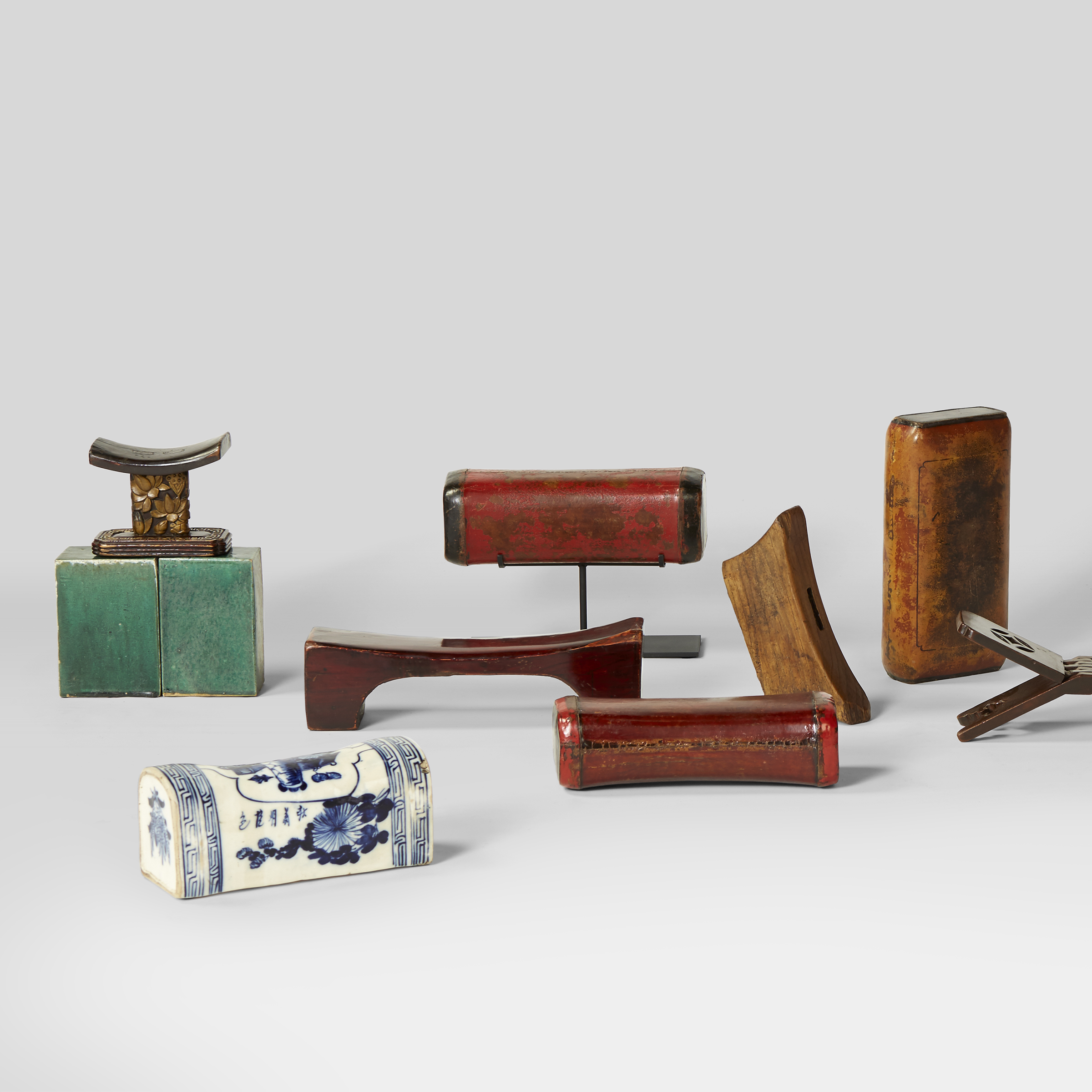
Rest Easy: Sculptural Headrests From Africa to Asia
While modern bedding may be elegant, whimsical, or chic, modern pillows tend to be more functional than artful. They’re comfortable essentials, used by almost everyone. Throughout time and across continents however, people have rested their heads in style, often on one-of-a-kind headrests meant to be as beautiful as they were practical. At PAGODA RED, we’ve been collecting these marvelous objects for decades. Collecting offers us the opportunity to draw connections across cultures, while admiring vastly creative approaches to a universal experience.
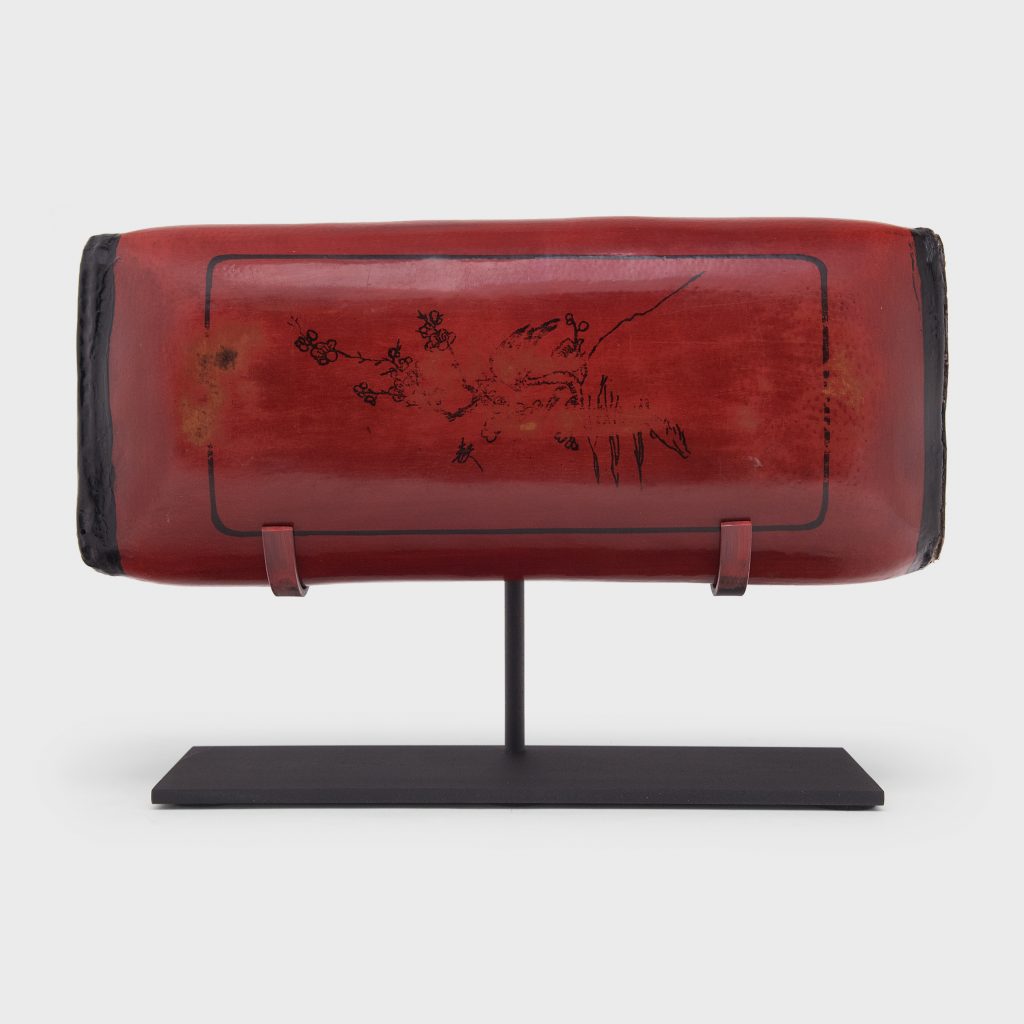
Red Lacquer Hide Pillow, c. 1850 PAGODA RED
Early headrests date all the way back to ancient Egypt. They were often decorated with protective symbols, such as the sun rising in the horizon. This symbolism hinted at the idea of resurrection, and being “born again” after a night of sleep, the same way some cultures believe in rebirth after death. In China, ceramic headrests with auspicious motifs also hinted at beliefs about the afterlife.
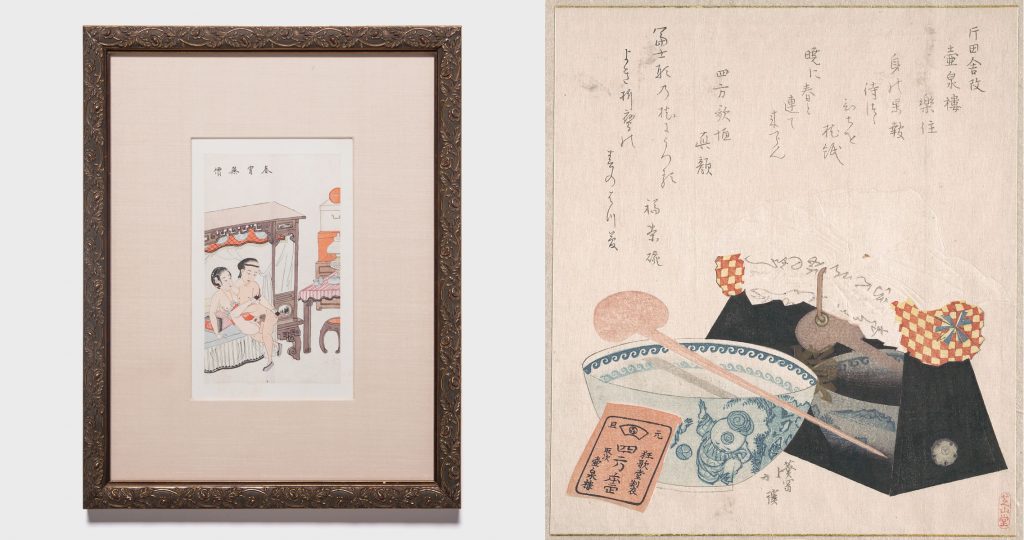
Left: Framed erotic album leaf c. 1850 depicting a cuboid headrest at PAGODA RED
Right: Pillow for Women and a Bowl, 19th-century, Japanese. Source: The Metropolitan Museum of Art
Throughout Chinese design history, function has often been entwined with symbolism and stylish forms, and so it is with these incredible pieces. The square shape of many early Chinese headrests was practical, but also drew from the ancient belief that a balanced use of square and circle shapes reflected the harmonious balance of heaven (round) and Earth (square). Additionally, Chinese headrests were often designed to show social status and philosophical beliefs, while keeping elaborate hairstyles tidy and the head cool during sleep.
Even today, “zhen”(枕), the Chinese character for headrest, or pillow, starts with “wood,” the material for many early headrests. As the centuries passed, rattan, bamboo, and lacquered wood were also used for comfort and aesthetic pleasure. Pillows hand-made of these sturdy materials were traditionally believed to be strong guardians of restful sleep because they kept bad dreams, which were considered bad spirits, away.
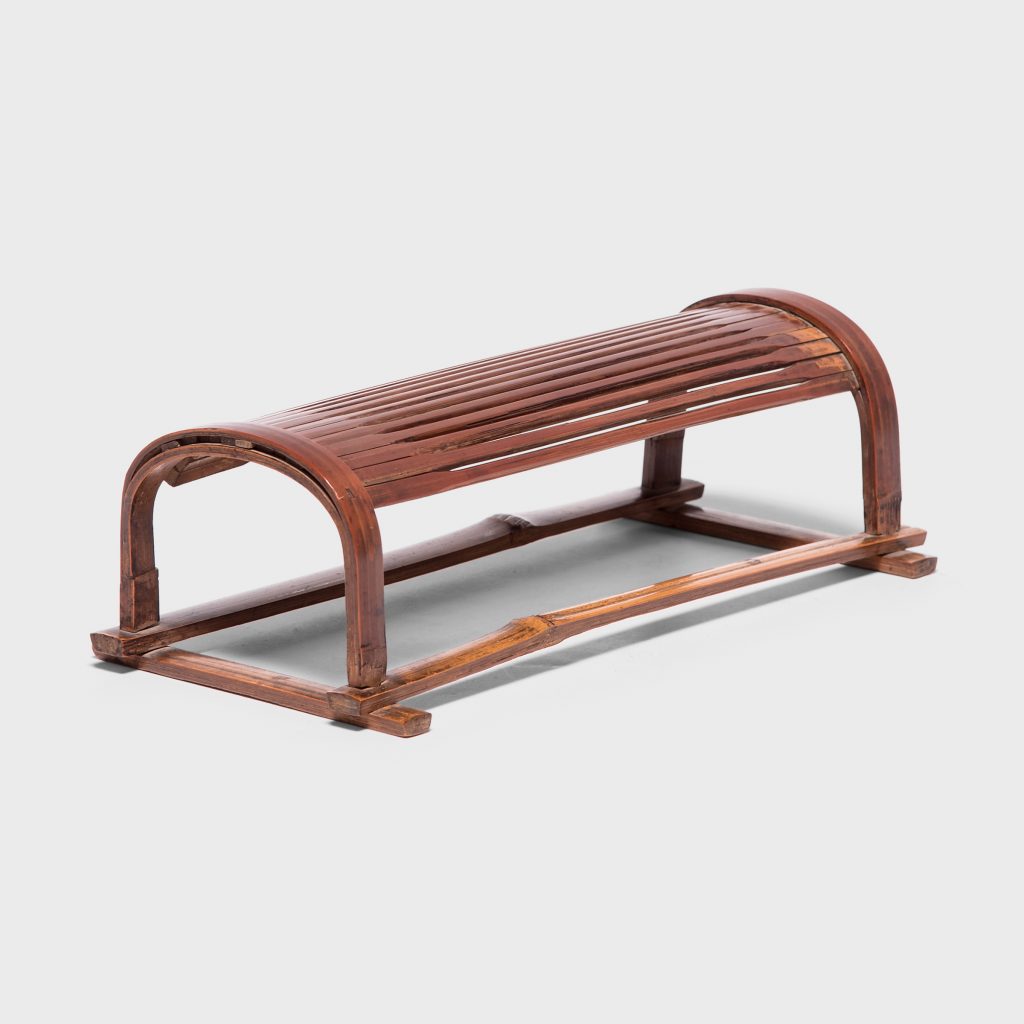
Split Bamboo Rounded Pillow c. 1850, PAGODA RED
During the Song Dynasty, ceramic headrests became popular as techniques of clay making peaked. The gorgeous design motifs on these headrests included tigers or lions to symbolize power and strength, floral patterns and garden scenes to represent scholarly pursuits, and infants to bless a couple with hopes for a growing family. An early 20th-century cream & brown headrest at PAGODA RED has fierce guardians perched and ready to protect the sleeper, but also a peaceful scene of a fisherman to encourage calm — a duality we can certainly appreciate after the past few years.
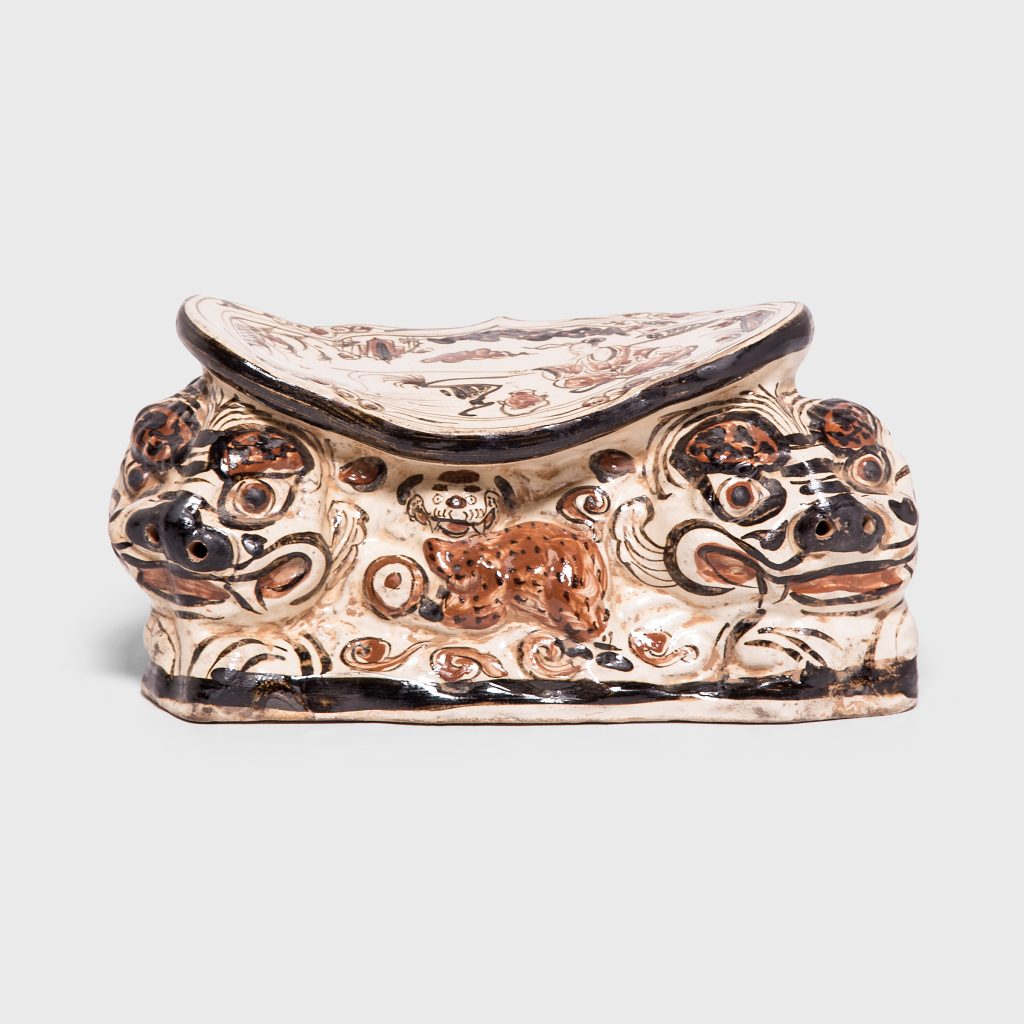
Double Guardian Headrest c. 1900, PAGODA RED
The popularity of Qinghua porcelain during the Qing Dynasty led to elegant blue-and-white headrests with intricate patterns. Delicate scrollwork and coin-shaped cutouts, representing wealth, were especially popular. At PAGODA RED, a favorite Qinghua piece features a playful guardian lion pursuing an embroidered ball, and we can imagine the woman who once fell asleep upon it being amused by him as well.
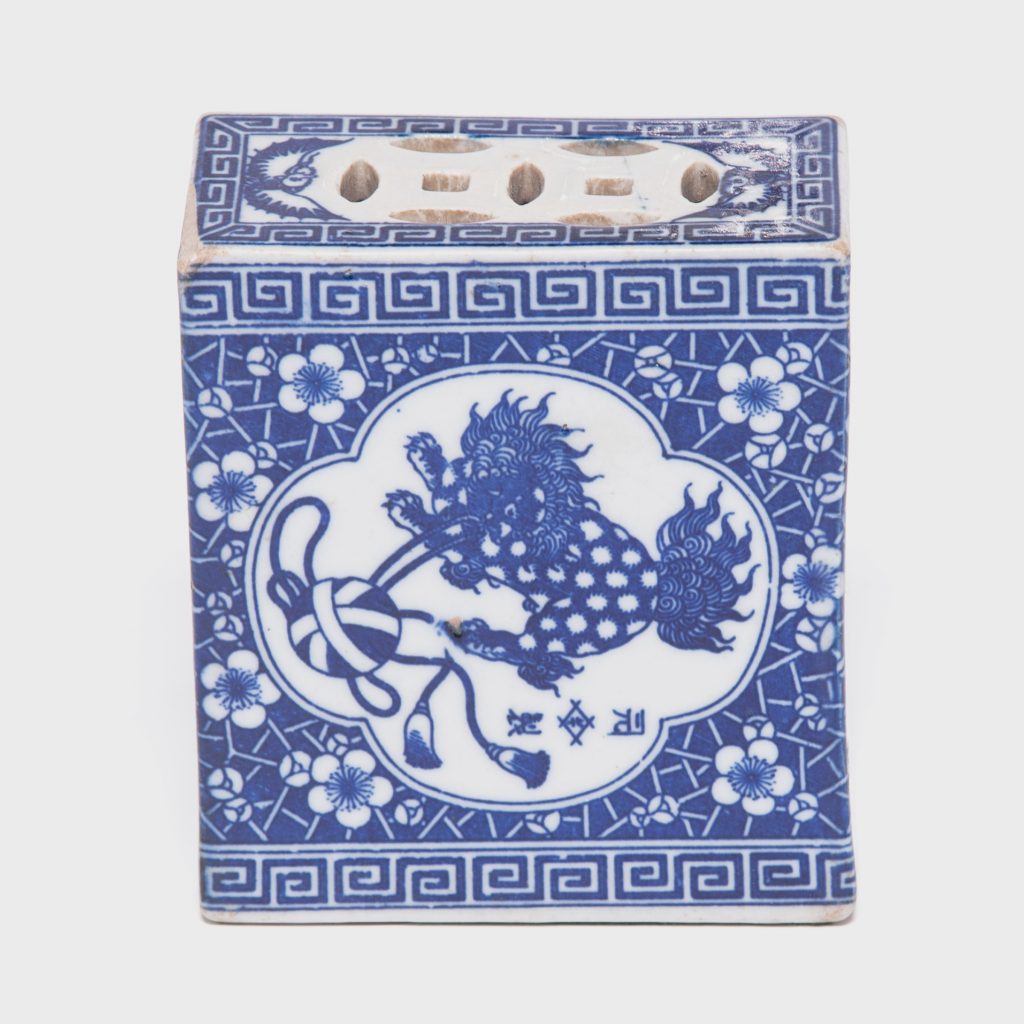
Blue and White Headrest with Guardian Lion c. 1850, PAGODA RED
Like the Egyptians and Chinese, the Senufo and Turkana people also have a history of beautifully carved wooden headrests, fit for their nomadic lifestyles in Africa. The smaller size and rounded shapes of these headrests meant they could be used as portable pieces of furniture, often doubling as stools. We were immediately drawn to this mid-century Ethiopian piece that’s a minimalistic dream, with beautiful curved lines of gleaming wood.
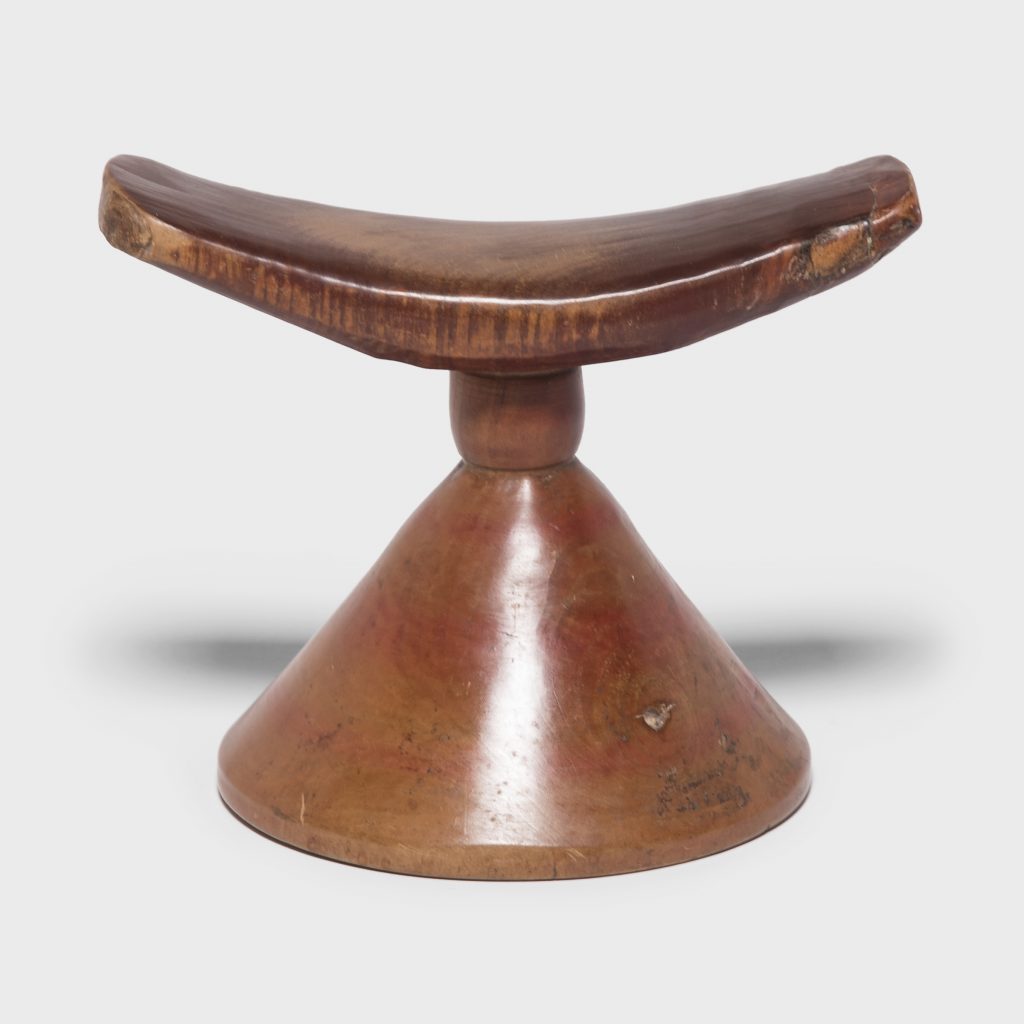
Ethiopian Headrest c. 1950, PAGODA RED
Artist and sculptor Isamu Noguchi was greatly drawn to the functionality of African sculptural objects, including wooden headrests. He “expressed a desire to bring sculpture into a more direct involvement with the common experience of living” in his modern spaces, much the same way African people lived throughout history.
Like Noguchi, modern artists like Xie Dong continue to explore the uses and beauty of headrests. In her sculpture “MUNG,” Xie Dong uses ceramic reminiscent of Chinese headrests to shape a modern “pillow,” highlighting the intersection between historic and modern ways of living. The futuristic sheen on “MUNG” also hints at sleeping evolutions yet to come. Even removed from its historical context, her sculpture encourages the viewer to think about the relationship between a sleeping person and the objects on which they sleep.
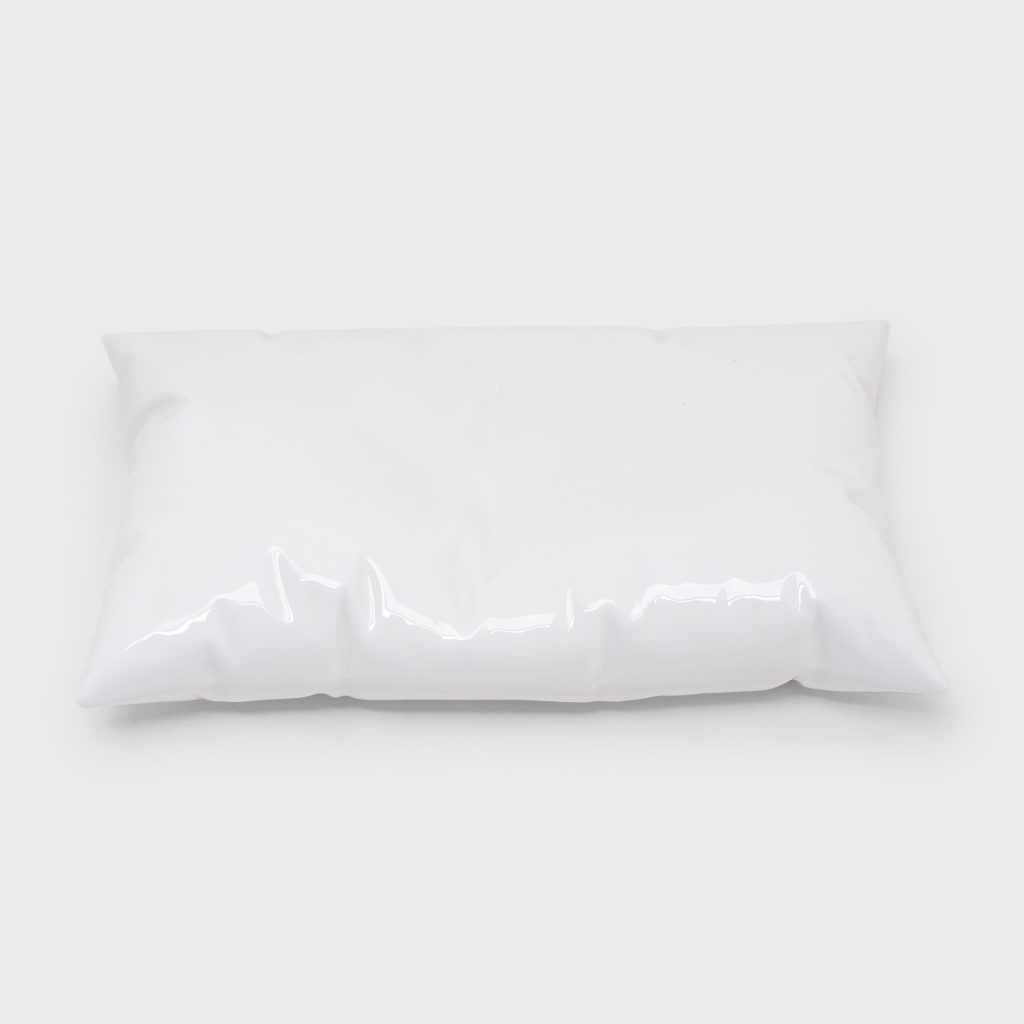
“MUNG” Pillow by Xie Dong at PAGODA RED
At PAGODA RED, we continue to seek out unique headrests from different times and places to appreciate their ambiguity. These sculptural objects highlight the beautiful and imaginative ways people have approached daily life throughout the centuries, and the intrinsic roles design and art have always played in everyday human experiences.

Are you an architect or designer with a story to tell?
Register with us to receive exclusive discounts and benefits, plus free shipping on your first order. Trade professionals are also eligible for collaborative features on our blog and social media channels. Please note that trade registration with PAGODA RED is only open to interior design and architecture professionals.
